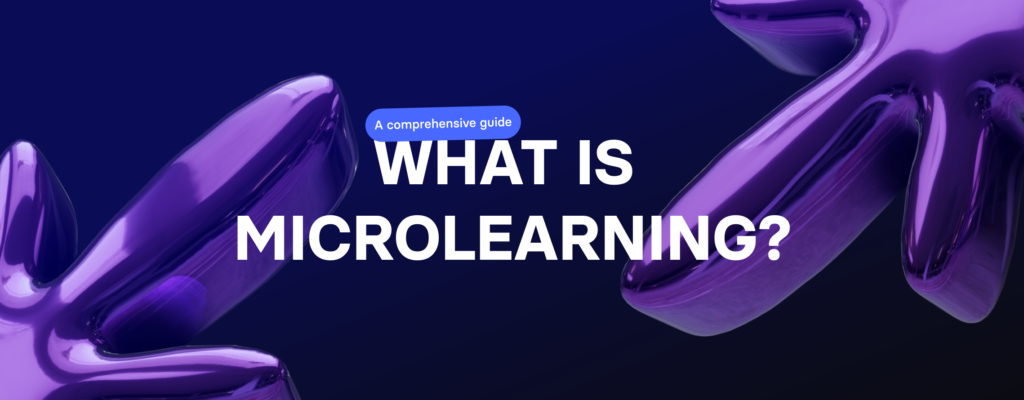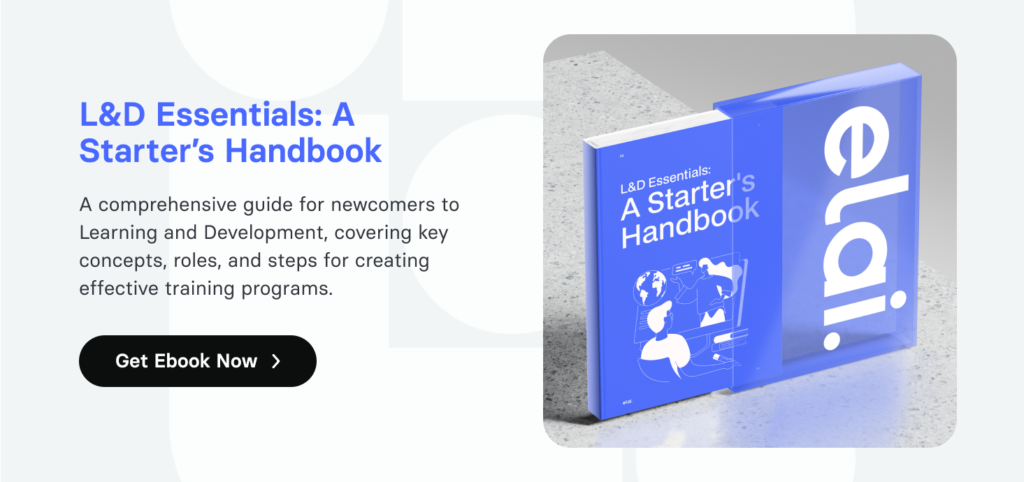Did you know your attention span, according to Microsoft, is 1 second shorter than a goldfish memory? What, in this case, should a person who constantly wants to learn and develop in his or her field do? For example, an employee who is taking professional development courses. The one thing that can solve this problem is microlearning, a trend in the 2024 learning and development field.
Microlearning is defined as short and small pieces of information used to achieve a specific learning outcome. Microlearning content typically takes between 1 and 10 minutes for a learner to master. This approach is necessary to provide short learning experiences that are easily accessible and can be used on the go, fitting into the student’s schedule and learning needs.
What characteristics does the learning method have, and what are the microlearning examples? Microlearning stands out for its strategic focus on concise, targeted content delivery, designed to fit into the learner’s busy life easily. It aims to make learning seamless by breaking complex subjects into smaller, manageable units, facilitating quicker comprehension and longer retention. Formats like brief videos, engaging quizzes, and visually appealing infographics exemplify this approach, each tailored to convey specific concepts or skills efficiently. These methods are not just about saving time; they’re about enhancing learning effectiveness by catering directly to the need for immediate application and flexibility in the learning process.
Benefits of microlearning
Accessibility. Different types of microlearning revolutionize the learning experience by injecting flexibility and efficiency into the process. Its short-form content strategy makes learning accessible even in the tightest schedules, allowing for educational moments during even the smallest daily pauses. This is one of the crucial microlearning benefits. This approach fits learning into daily life and transforms it into a series of manageable, engaging tasks that can spark curiosity and motivate further exploration.
Enhancing memory retention. By distilling information to its essence, this method ensures that learners engage with core concepts without the distraction of less relevant details. This focused engagement helps embed knowledge deeper into memory, aided by strategically repeating key points across different sessions. Such reinforcement makes it easier for learners to recall information when needed, making learning not just an academic exercise but a practical tool in everyday contexts.
Ability to adapt to the needs of modern learners. It democratizes learning, allowing people to learn the way they want from any device. This level of accessibility is vital in a rapidly changing world for continued personal and professional development in a person’s chosen industry.
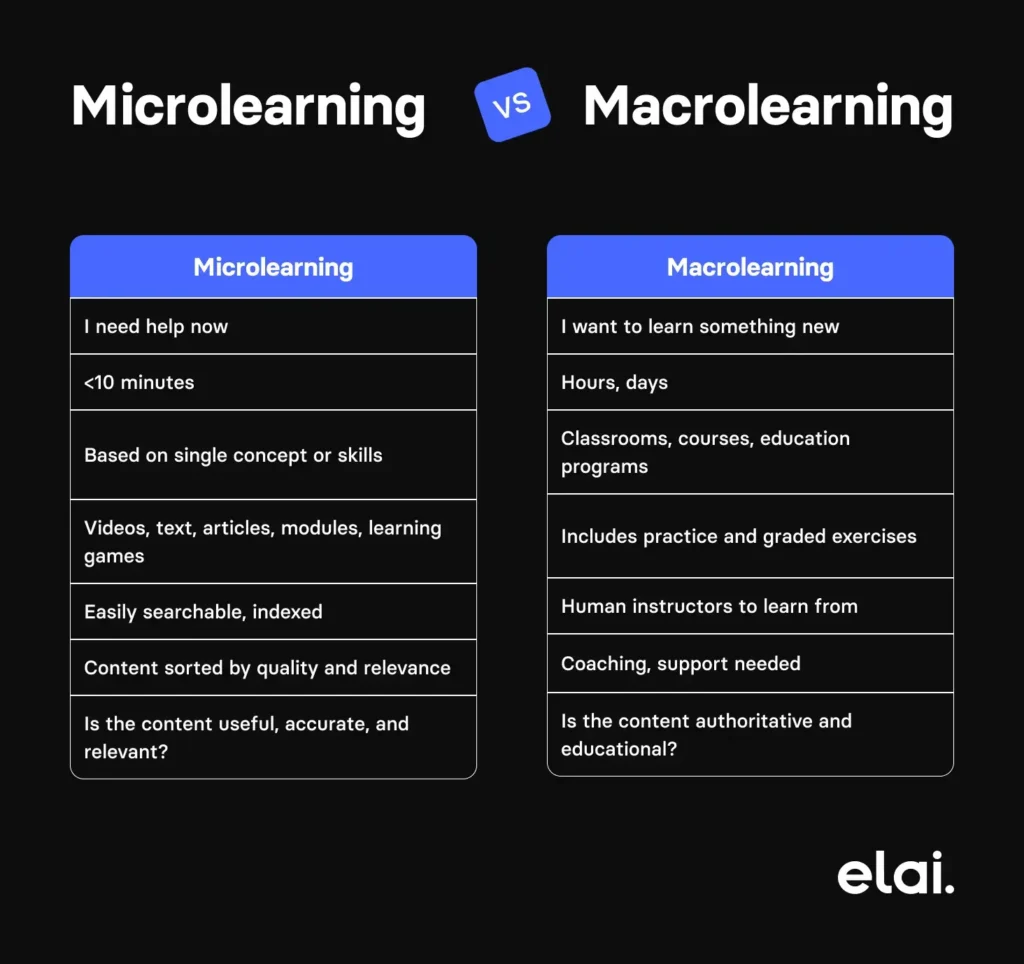
Microlearning best practices
Incorporating elements that boost learner engagement and participation is one of the best practices for microlearning.
Interactive components, such as quizzes, simulations, and interactive videos, make the learning process more dynamic, fostering a deeper connection with the content. These interactive microlearning tools make learning more enjoyable and reinforce the learning material, enhancing the overall retention and understanding of the subject.
Tailoring content to meet specific learning objectives is crucial to ensure microlearning’s effectiveness.
By concentrating on precise goals, instructional designers can craft content that engages learners and facilitates the direct application of new knowledge and skills. This focus on goal-oriented design helps create a structured learning path that aligns with the learners’ needs, enabling them to achieve tangible outcomes from each of microlearning principles.
Accessibility is another crucial factor for the success of microlearning strategies. Learners can access educational materials anytime and anywhere by optimizing content for mobile and other digital platforms, fitting learning seamlessly into their daily routines. This approach supports the modern learner’s lifestyle, characterized by the need for flexibility and continuous learning opportunities. Making microlearning content easily accessible ensures that individuals can consistently engage with and benefit from their learning experiences, regardless of their schedule or location.
Microlearning Trends
Microlearning continues to evolve, driven by technological advancements, changing learner preferences, and organizational needs. Here are eight key trends in microlearning:
Mobile-First Design: Now, when we use smartphones and tablets for learning, microlearning content is being designed with a mobile-first approach. This ensures that learning modules are easily accessible on any device, providing a convenient learning experience across different screen sizes and operating systems.
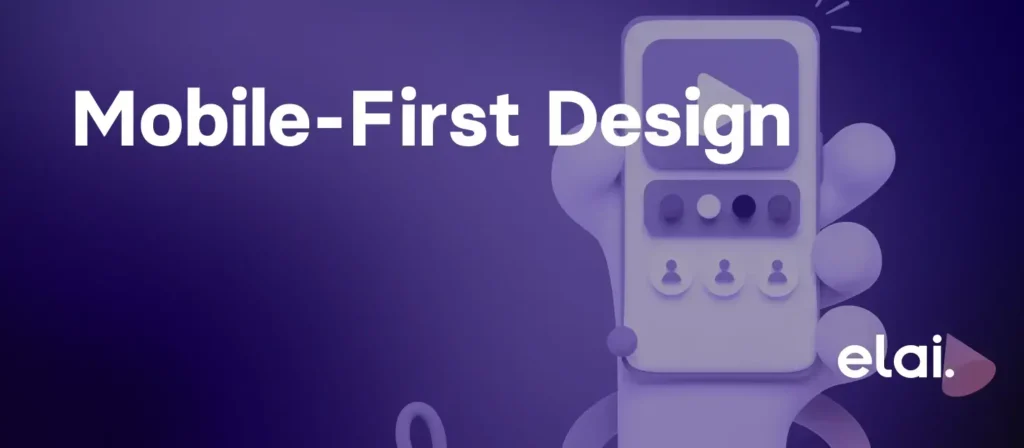
Gamification: Integrating game elements into microlearning modules to make learning more engaging and fun. This includes points, badges, leaderboards, and challenges encouraging learners to engage deeper with the content and achieve their learning goals.

Personalization: Tailoring learning paths and content to meet individual learner’s needs, preferences, and skill levels. Advanced analytics and AI are used to analyze learners’ performance and preferences, offering customized recommendations for further learning.
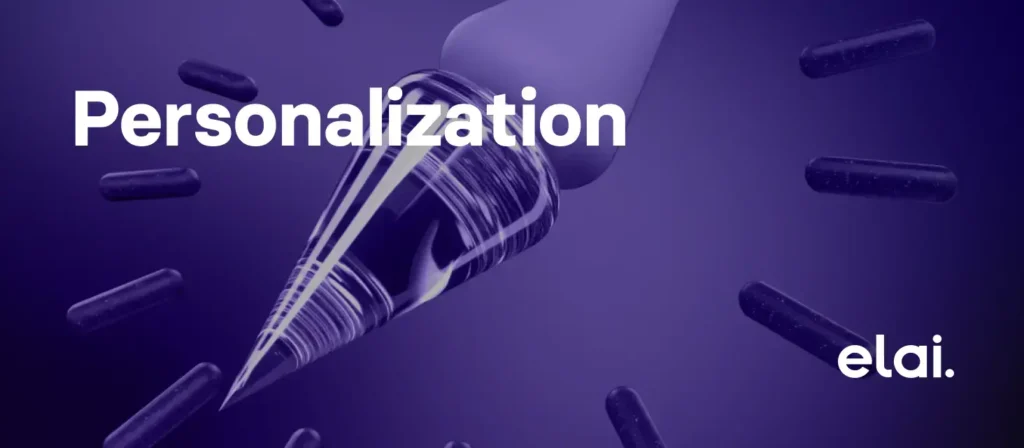
Just-In-Time Learning: Providing learners with access to information exactly when they need it, often in the flow of work. This trend emphasizes the practical application of knowledge, supporting performance improvement and productivity.
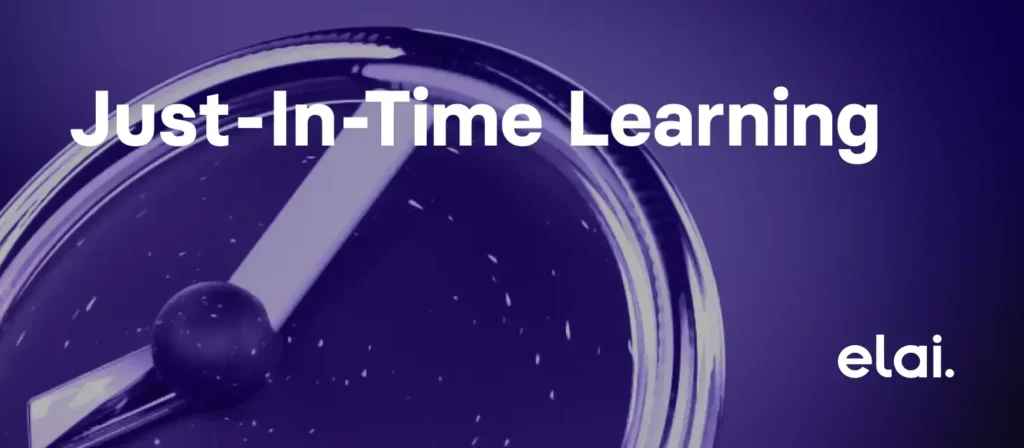
Social Learning: Encouraging collaboration and sharing among learners. Microlearning training platforms incorporate social features like discussion forums, peer feedback, and community challenges to foster a sense of connection and community learning.
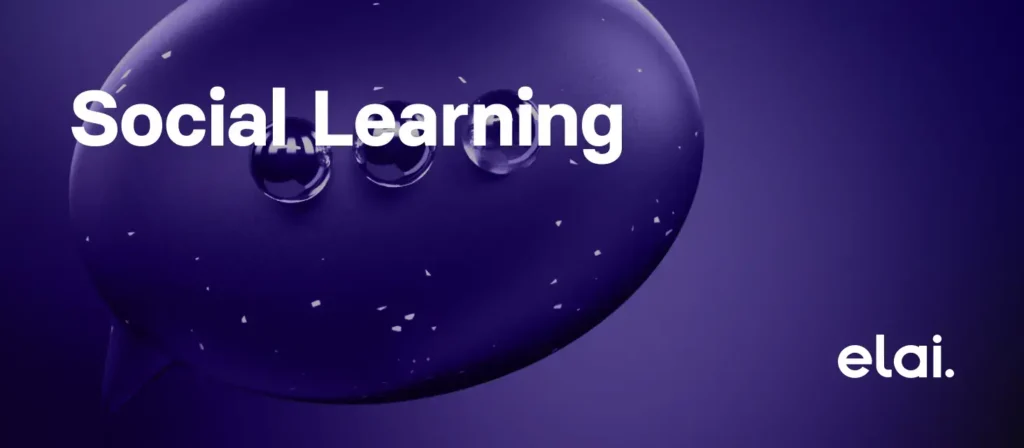
Video-Based Learning: The use of short, compelling videos as a primary medium for presenting information. Microlearning videos effectively demonstrate processes, tell stories, and present complex information in an easily digestible format.
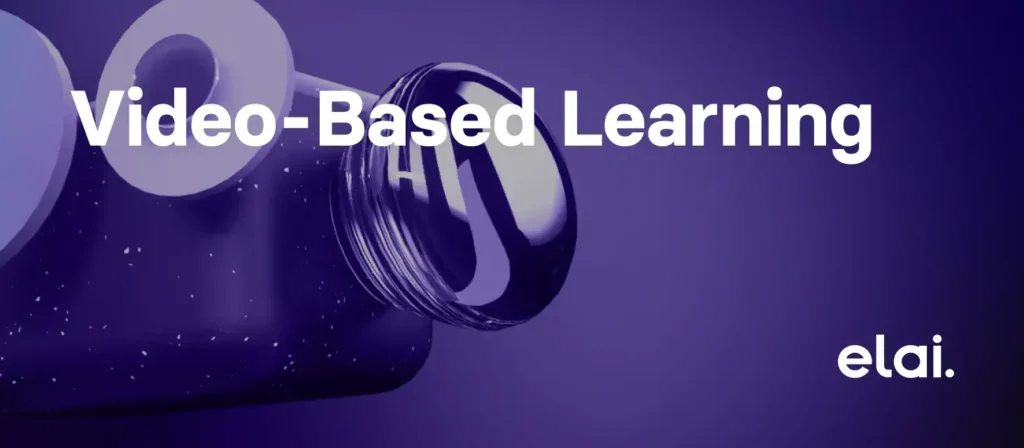
Micro-Assessments: Incorporating short quizzes, polls, and interactive assessments to provide immediate feedback. These micro-assessments help reinforce learning, gauge understanding, and identify areas where additional focus is needed.
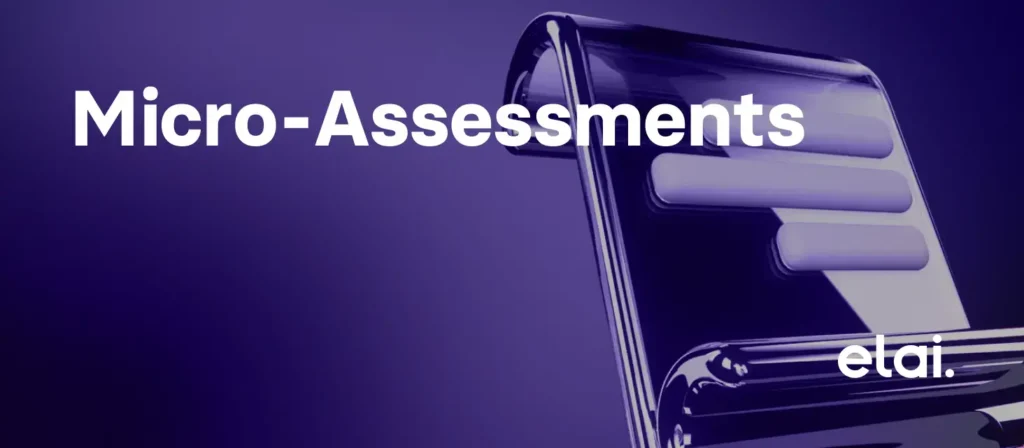
Content Curation and Aggregation: Leveraging existing resources and content available online rather than creating everything from scratch. Curated playlists, resource libraries, and aggregated content tailored to specific learning objectives are becoming more common, allowing learners to explore topics in greater depth.
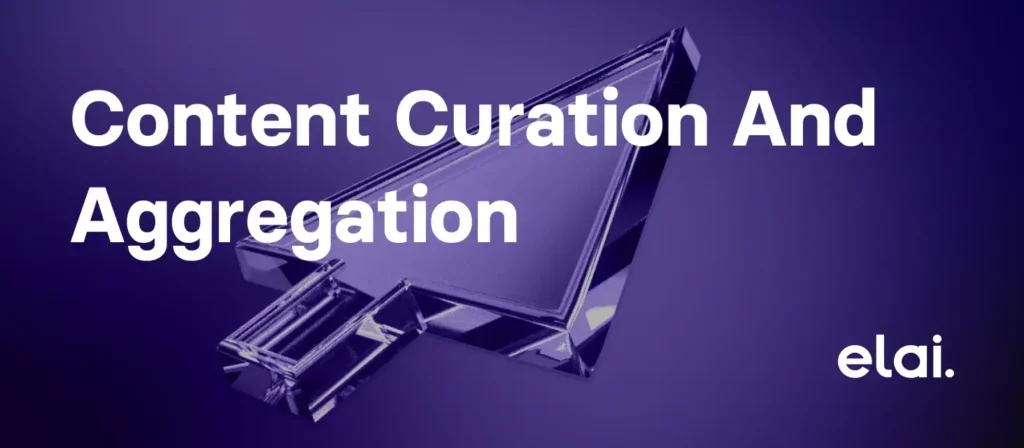
These trends highlight the dynamic nature of microlearning methods, focusing on flexibility, engagement, and personalized learning experiences. As technology and learner expectations continue to evolve, these trends will likely shape the future direction of microlearning in both educational and professional contexts.
How to create a microlearning video
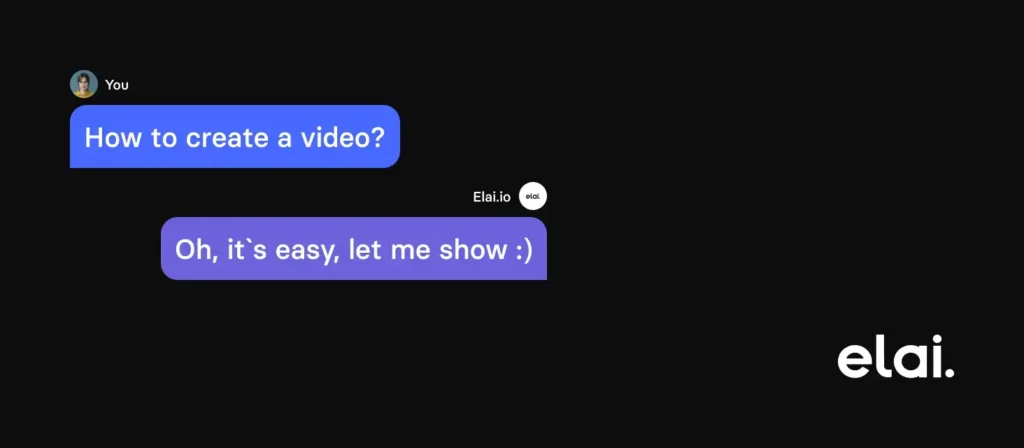
Let’s try to dive into video-based learning, especially relatable to corporate microlearning. Any L&D specialists would tell you that microlearning videos are always good for employee training. Creating this type of video involves a series of steps. Here they are:
1. Identify Learning Objectives
Start by defining clear, concise learning objectives. Answer the question: what do I want my audience to learn or be able to do after watching the video? This step is crucial for creating focused content that delivers value.
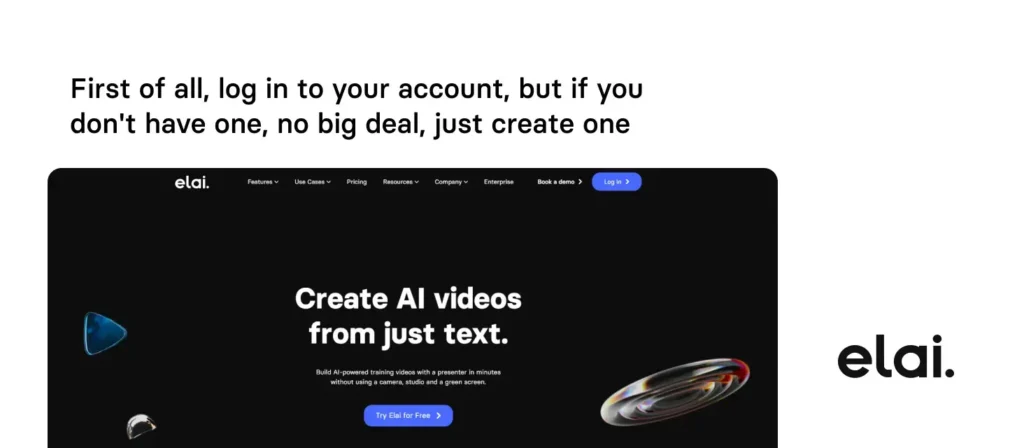
2. Script Your Content
Write a script that is direct and to the point. Microlearning videos should be short, typically under 5 minutes, so every word counts. Ensure the script aligns with your learning objectives and is structured to maintain viewer engagement.
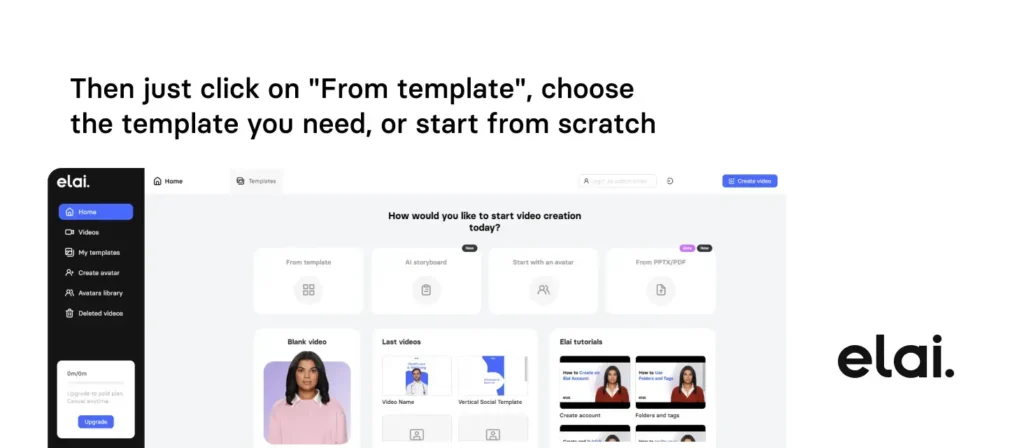
3. Choose the Right Tools
For creating microlearning videos, you have a range of tools at your disposal. AI-driven platforms like Elai.io offer a user-friendly interface for creating videos without the need for extensive video editing skills or equipment. You can select from pre-designed templates, use text-to-speech for narration, and even incorporate AI avatars.
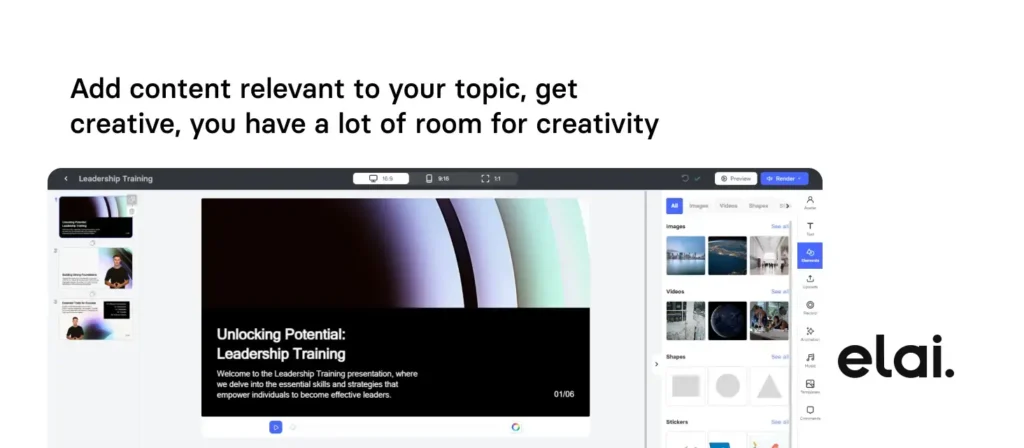
4. Incorporate Visuals and Interactivity
While creating microlearning content, use relevant visuals, animations, and interactive elements to make your video more engaging. Platforms like Elai.io allow you to add animations, charts, and other visuals directly within the platform, enhancing the learning experience.
5. Keep It Accessible
Ensure your video is accessible to all learners by including subtitles or captions. It’s especially importance when it comes to microlearning for employees from different countries. This helps those who are hearing impaired and may want to watch the video in a sound-sensitive environment.
6. Test and Revise
Before finalizing your video, get feedback from a small group of your target audience. Use their input to make necessary revisions, ensuring the video effectively meets the learning objectives for microlearning in the workplace.
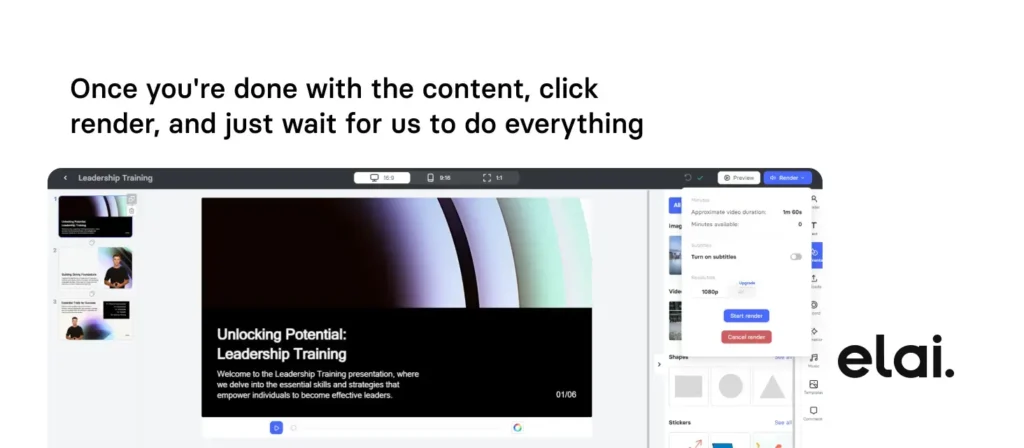
7. Distribute and Integrate
Once your video is ready, distribute it through the appropriate channels. If you’re using it within an organization, integrate it into your Learning Management System (LMS) or other e-learning platforms. For broader audiences, consider platforms like YouTube or Vimeo.
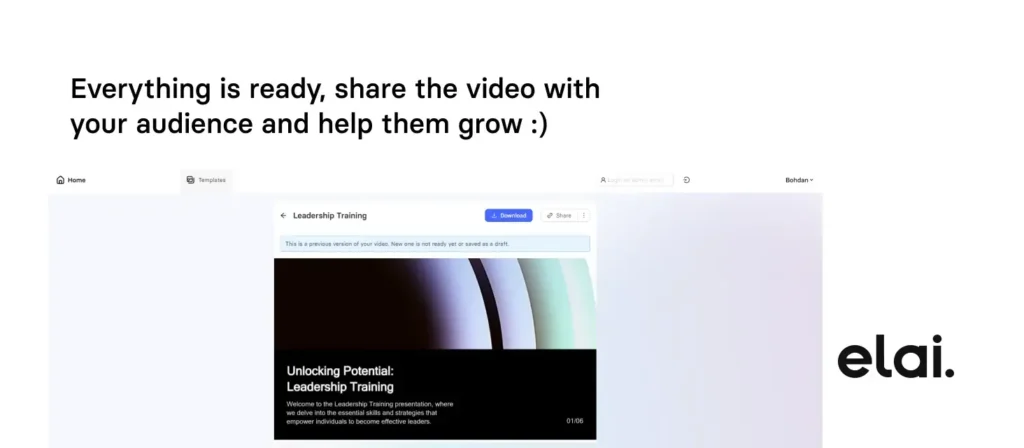
Microlearning Video Examples
There are plenty of ways of creating microlearning videos. Here are some examples of the topics you might like to create a video for:
Product training
- Microlearning offers concise, accessible training in short bursts, ideal for product training.
- Employees can easily access bite-sized modules on their devices, anytime, anywhere, to learn about product features or updates.
- Interactive elements like short videos or quizzes keep employees engaged. For example, a short video demonstrating a new product feature or a quiz testing knowledge on product specifications.
- Modules can be tailored to suit different levels of expertise. For instance, a basic module for new hires covering product basics, and an advanced module for experienced employees focusing on advanced features.
- Breaking down complex product information into smaller chunks improves retention. For example, a series of short modules covering different aspects of a product’s functionality.
- Microlearning enables rapid deployment of training content, ensuring employees stay updated on the latest product releases or changes. For instance, a quick module introducing a new product version immediately after its launch.
Onboarding
- New hires can access microlearning modules on-demand, allowing them to learn practical tasks at their own pace, which is especially beneficial during onboarding when there’s a lot to absorb.
- Short, task-oriented modules keep new employees engaged and focused on mastering specific skills or procedures, such as software use or safety protocols.
- Microlearning enables the delivery of just-in-time training for immediate application of skills, such as completing on-demand tasks related to their job role.
HSE
- Microlearning videos allow for the quick dissemination of critical safety information or updates, ensuring employees have access to the latest procedures or regulations.
- Short, focused modules reinforce key safety practices, improving retention and compliance with HSE guidelines.
- Employees can access safety-related microlearning modules anytime, anywhere, promoting continuous learning and awareness.
Refresher Courses
- Microlearning modules serve as quick refreshers for employees, helping them retain important information and skills over time.
- Interactive elements in microlearning modules, such as quizzes or simulations, make refresher training more engaging and effective.
HR-related courses
- Microlearning accommodates the diverse learning needs and preferences of employees, allowing them to access HR-related content on various topics, such as diversity training or performance management, based on their interests or requirements.
- Microlearning facilitates the rapid dissemination of updates or changes to HR policies or regulations, ensuring employees are informed and compliant.
Upskilling
- Microlearning offers personalized learning paths tailored to employees’ skill levels and career goals, allowing them to focus on areas where they need to upskill.
- Short, interactive modules make upskilling more engaging and enjoyable, motivating employees to invest time in their professional development.
- Employees can access upskilling microlearning modules on-demand, fitting learning into their busy schedules without disrupting workflow.
In conclusion, microlearning enhances retention and engagement and also democratizes learning, ensuring accessibility and fostering continuous personal and professional development of the staff.
FAQ
What is microlearning?
Microlearning is a strategy that delivers content in small, specific bursts, focusing on a single topic or skill at a time.
How does microlearning work?
Microlearning works by breaking down complex information into digestible, manageable pieces, making it easier for learners to absorb and retain knowledge.
How to create microlearning videos?
To create microlearning videos, focus on a single learning objective, script concise content, use engaging visuals, and keep the video short, ideally between 2 and 5 minutes.
